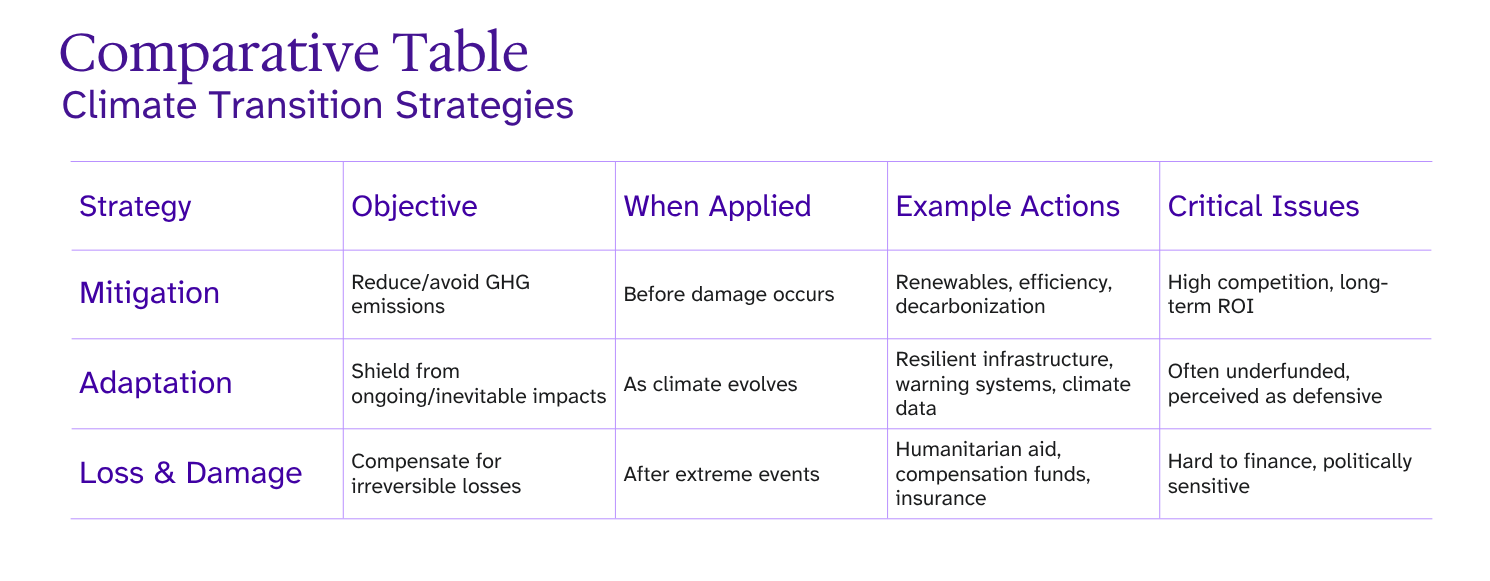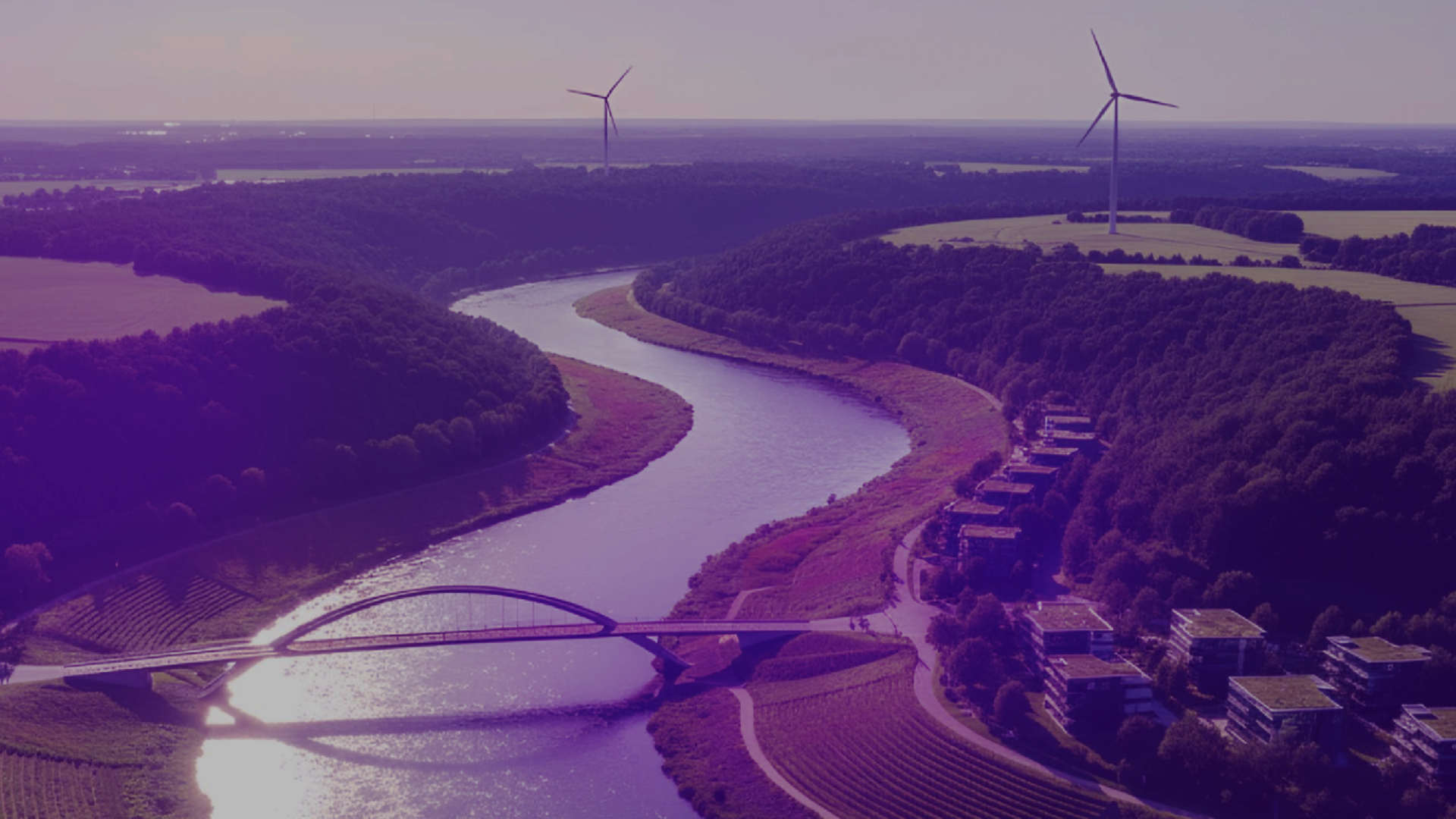Data, policy, and innovation are now central to surviving and prospering in an age of extreme climate volatility and climate risks. Perspectives and frameworks from the World Bank and OECD confirm adaptation as an essential driver for both growth and resilience.
Adaptation: a strategic imperative, not just crisis response
Adaptation is not merely an instinctive reaction; it is an essential corporate strategy for maintaining growth and resilience in the face of increasingly frequent climate shocks.
According to the Intergovernmental Panel on Climate Change (IPCC), only between 4% and 8% of global climate finance flows are currently allocated to adaptation, yet the costs of climate disasters in the European Union already exceed €26 billion annually.
OECD studies estimate that each euro invested in resilient infrastructure today helps avoid damages worth four times that amount in the future. The latest World Bank report underscores that only by investing in resilience can economic and inclusive development be safeguarded, as advocated by the GRID (Green, Resilient, Inclusive Development) framework.
Why adaptation is urgent
Between 2020 and 2024, global economic losses from extreme weather events exceeded $1.4trillion. The Network for Greening the Financial System (NGFS) warns that even in a net-zero transition scenario, global GDP could shrink by 8% by 2050 without robust resilience measures. In the Global South, the annual adaptation finance requirement is estimated at $300 billion, with current funding covering only about 10% of this amount. The evidence points clearly to the urgent need for prioritizing adaptation among climate strategies.
Transforming urgency into strategy: how to build an adaptive economy
To shift from an emergency response to a structural approach, adaptation must become an integral part of development and investment strategies. Data and case studies demonstrate how climate adaptation strategies can generate tangible returns and competitive advantages for countries, regions, and companies. The following sections will explore these aspects in more detail.
Adaptation pays off: key figures and case studies
The effectiveness of adaptation strategies is confirmed by comparative data and global initiatives that span large-scale projects and operational best practices. Investing in resilience generates tangible economic and social returns:
· The benefit-cost ratio for coastal protection works in middle-income countries exceeds 4.
· Heatwave warning plans introduced in France after 2003 saved approximately 4,000 lives in summer 2006.
· The new Thames Barrier in London will yield savings thirty times its construction cost, thanks to averted flood damage.
· Singapore integrated climate analytics into transport systems, reducing journey times by 11% and traffic emissions by 8% over five years.
· New York, using predictive models for domestic fires, cut incidents by 14% from 2020 to 2023, freeing $500 million in city resources.
· In Europe, pilot projects in regenerative agriculture increased cereal yields by 12% even under severe drought conditions.
The adaptation finance gap
Global annual investment needs in resilience are estimated to be between $212 and $334 billion by 2030, while actual spending remains below $76 billion. In Europe, even in mild warming scenarios, at least €40 billion per year will be required for adaptation, rising to €200 billion in cases of more severe climate impacts.
Levers for turning adaptation into competitive advantage
Investing in resilient infrastructure, financial innovation, and adaptive governance are the pillars of the adaptive economy, as documented by the World Bank and OECD. Notable emerging toolsi nclude:
· Green resilience bonds linked to climate-related KPIs.
· Parametric insurance, now active in over 30 developing countries.
· Early warning systems: According to WMO and World Bank, a$3 billion annual investment could prevent losses of at least $30 billion.
· Digital platforms for risk measurement and management,adopted across the EU and in global case studies.
The role of businesses is decisive. Evidence from OECD and World Bank shows that firms integrating climate risk analysis, innovative financial instruments, and transparent governance into their operating models systematically achieve greater operational resilience, lower capital costs, and stronger capabilities for navigating volatile environments.
The ability to adapt rapidly and systematically to new environmental and market conditions must be regarded as a strategic driver of competitiveness and long-term success. In a world where uncertainty and complexity are structural features, strategic adaptation—rather than reactive adjustment—defines robust leadership over the medium and long term.













